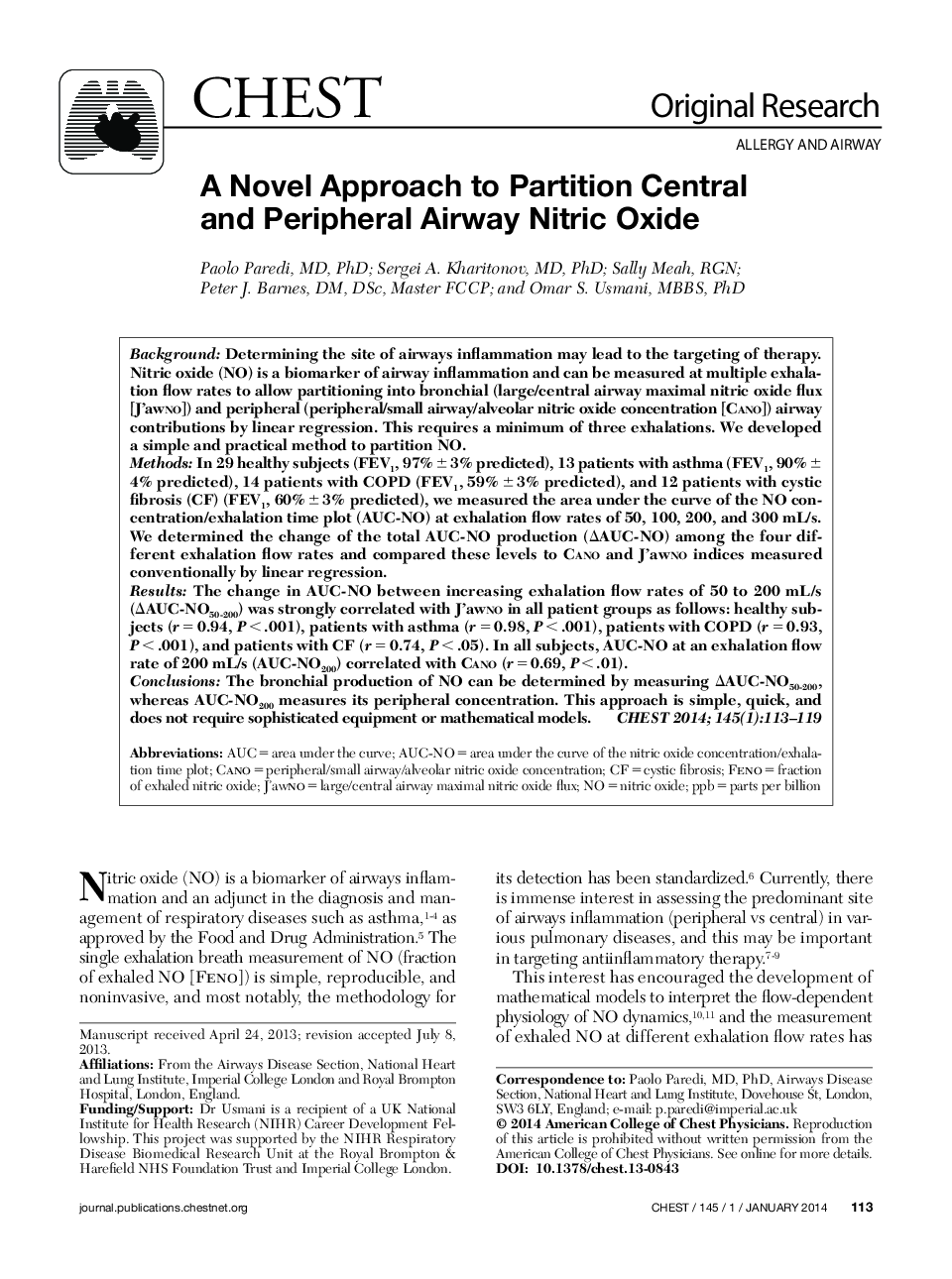| Article ID | Journal | Published Year | Pages | File Type |
|---|---|---|---|---|
| 2900648 | Chest | 2014 | 7 Pages |
BackgroundDetermining the site of airways inflammation may lead to the targeting of therapy. Nitric oxide (NO) is a biomarker of airway inflammation and can be measured at multiple exhalation flow rates to allow partitioning into bronchial (large/central airway maximal nitric oxide flux [J’awno]) and peripheral (peripheral/small airway/alveolar nitric oxide concentration [Cano]) airway contributions by linear regression. This requires a minimum of three exhalations. We developed a simple and practical method to partition NO.MethodsIn 29 healthy subjects (FEV1, 97% ± 3% predicted), 13 patients with asthma (FEV1, 90% ± 4% predicted), 14 patients with COPD (FEV1, 59% ± 3% predicted), and 12 patients with cystic fibrosis (CF) (FEV1, 60% ± 3% predicted), we measured the area under the curve of the NO concentration/exhalation time plot (AUC-NO) at exhalation flow rates of 50, 100, 200, and 300 mL/s. We determined the change of the total AUC-NO production (δAUC-NO) among the four different exhalation flow rates and compared these levels to Cano and J’awno indices measured conventionally by linear regression.ResultsThe change in AUC-NO between increasing exhalation flow rates of 50 to 200 mL/s (δAUC-NO50-200) was strongly correlated with J’awno in all patient groups as follows: healthy subjects (r = 0.94, P < .001), patients with asthma (r = 0.98, P < .001), patients with COPD (r = 0.93, P < .001), and patients with CF (r = 0.74, P < .05). In all subjects, AUC-NO at an exhalation flow rate of 200 mL/s (AUC-NO200) correlated with Cano (r = 0.69, P < .01).ConclusionsThe bronchial production of NO can be determined by measuring δAUC-NO50-200, whereas AUC-NO200 measures its peripheral concentration. This approach is simple, quick, and does not require sophisticated equipment or mathematical models.
